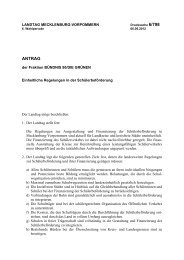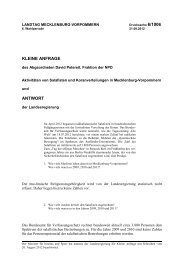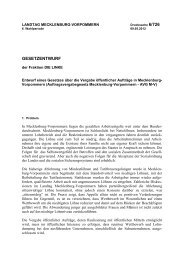Baltic Rim Economies - Baltic Port List
Baltic Rim Economies - Baltic Port List
Baltic Rim Economies - Baltic Port List
You also want an ePaper? Increase the reach of your titles
YUMPU automatically turns print PDFs into web optimized ePapers that Google loves.
Expert article 883 <strong>Baltic</strong> <strong>Rim</strong> <strong>Economies</strong>, 21.12.2011 Quarterly Review 5�2011<br />
Some policy proposals based on the Finnish-Russian innovation collaboration<br />
By Kari Liuhto<br />
12 recommendations based on Finnish-Russian innovation<br />
cooperation can be summarized as follows.<br />
1) Establish a Joint EU-Russia Innovation Center both in<br />
Russia and in the EU. These two units would bring together<br />
the innovation-intensive firms of Russia and the EU. It would<br />
be wise to found such a unit in St. Petersburg due to its<br />
proximity to the EU, and in a similar manner, another unit in<br />
Helsinki, which is connected to St. Petersburg by high speed<br />
trains. The EU and Russia should share the costs of<br />
establishing these units on an equal footing.<br />
2) Support the internationalization of innovations. The<br />
adaptation of western innovations into the Russian market and<br />
the internationalization of the Russian goods towards the EU<br />
market is more rational than investing into insecure and<br />
expensive innovation activity, and therefore, cooperation with<br />
foreign firms most probably will lead to the fastest results.<br />
3) Turn the innovations conducted in the military sector into<br />
civilian use. Closed innovation systems are expensive and<br />
inefficient, and usually, they fuel corruption. Therefore, it would<br />
be important to modernize the innovation system linked with<br />
the Russian military, as the army uses 35-40 per cent of the<br />
Russian R&D expenditure, and probably this share is to<br />
increase, if Russia is to allocate USD 650 billion into the<br />
modernization of its army in this decade. Russia might benefit<br />
from the experiences of the USA and Israel, which have turned<br />
several valuable military-related innovations into civilian use,<br />
and vice versa.<br />
4) Improve intellectual property rights (IPR) and the<br />
investment climate. Inviting the world’s leading IPR specialists<br />
to Russia to review the Russian IPR legislation and institutions<br />
would be the fastest way to improve property rights in the<br />
country. One of the main weaknesses of the Russian<br />
investment climate is over-bureaucracy and corruption linked<br />
to it. The only way to win the battle is to minimize the number<br />
of bureaucrats and regulations, since fighting bureaucracy with<br />
bureaucrats is doomed to fail.<br />
5) Institutional innovations are needed. For instance, it is<br />
highly recommended to transform the Academy of Russian<br />
Sciences (RAS) from a research unit into a research funding<br />
organization. Such a transformation would lift the RAS above<br />
the operative research units and turn it into a strategic<br />
research policy actor. Moreover, this change would make the<br />
use of national R&D funding more effective and enhance<br />
competition between the universities, which should be the core<br />
of the research activities in Russia. In addition, closer<br />
cooperation between the Russian Ministry of Education and<br />
the Ministry of Economic Development would facilitate bringing<br />
scientific ideas into commercialized products and services.<br />
6) Design a service innovation policy. The USSR neglected<br />
services, while emphasizing industrial production. The ghost of<br />
the Soviet mentality still moves in the current innovation policy<br />
of Russia, as many of the policy measures are targeted<br />
towards technological innovations. In this context, one should<br />
not forget that more than half of the Russian GDP is formed by<br />
services, and an improvement in services would definitely<br />
bring the advancements of Russian innovation policy into the<br />
hands of every Russians. Upgrading the competitiveness of<br />
services would add to the growth of the Russian GDP.<br />
7) Enhance management innovations. Around a quarter of<br />
the Russian GDP is created by state-owned enterprises<br />
(SOEs) and the 100 largest SOEs cover a majority of this<br />
stake. Taking this into account, it would be rational to create a<br />
team, consisting of a dozen top international management<br />
consultants, to review the manage practices of these SOEs.<br />
Such a team would bring much needed transparency to the<br />
37<br />
operations of these SOEs and would increase the efficiency of<br />
these firms, adding positively to the overall economic growth of<br />
Russia.<br />
8) Create innovation competition. One should publish a list<br />
of the most innovative regions in Russia. As the innovations<br />
are on the top of the politicians’ agenda, publishing a list of the<br />
most innovative regions would encourage the regional<br />
administration to develop own innovation policies. Besides,<br />
one could establish both national and regional innovation<br />
competitions among firms and citizens, which would aid in<br />
mobilizing the SMEs and ordinary people.<br />
9) Establish innovation journalism to share best practices.<br />
It is essential to communicate success stories to encourage<br />
SMEs and ordinary Russians to innovate, but simultaneously,<br />
it is wise to communicate openly about failures, since mistakes<br />
are the best teachers.<br />
10) Do not concentrate on radical innovations. We very<br />
seldom experience radical innovations, and therefore, it would<br />
be rational to focus the innovation policy on improving existing<br />
products and services. Though top scientists and politicians<br />
favor radical innovations due to their publicity, continuous<br />
product and service improvement is usually the most<br />
rewarding for society as a whole. Russia does not need<br />
periodical innovation programs but it needs a sustainable<br />
innovation culture.<br />
11) Teach creativity and entrepreneurship in universities.<br />
Creativity and entrepreneurship are the two main friends of<br />
successful modernization, whereas bureaucracy and<br />
conservatism are its worst foes. The federal e-learning courses<br />
dedicated to innovation and entrepreneurship would make it<br />
possible for all the Russian universities to take advantage of<br />
the latest achievements of modernization, provided that the<br />
regional universities possess a sufficient ICT environment, and<br />
dissemination is organized adequately.<br />
12) Avoid political stagnation. Should Russia be unable to<br />
develop free and fair political competition, there is a real risk<br />
that a one party-dominant system will lead to the similar<br />
administrative and socio-economic stagnation that was<br />
experienced during the Brezhnev era.<br />
This column is based on the article published by Taylor &<br />
Francis Group in the USA in a special issue the Journal of<br />
East-West Business. The special issue is called “Innovation<br />
Policy in Russia in the Twenty-First Century: A Future Role of<br />
Foreign Firms in Modernization”.<br />
Kari Liuhto<br />
Member<br />
The Working Group “Transition<br />
to Innovation-based Growth”<br />
contributing to the 2020 Strategy<br />
for the Russian Government<br />
Professor<br />
Turku School of Economics<br />
University of Turku<br />
Finland<br />
� Pan-European Institute � To receive a free copy please register at www.tse.fi/pei �
















